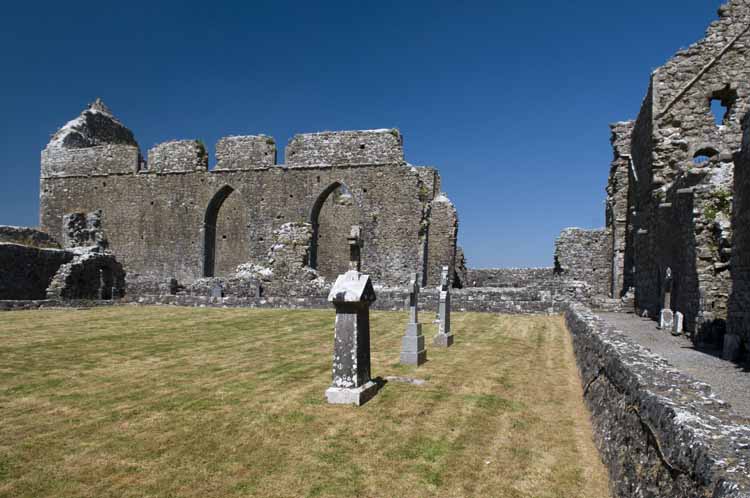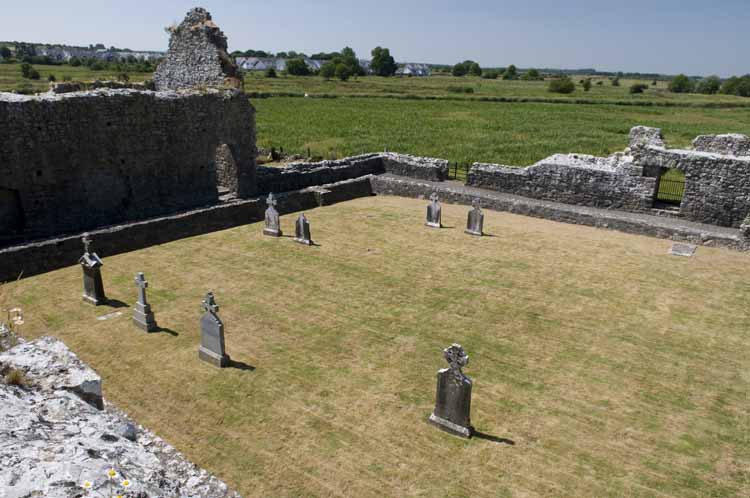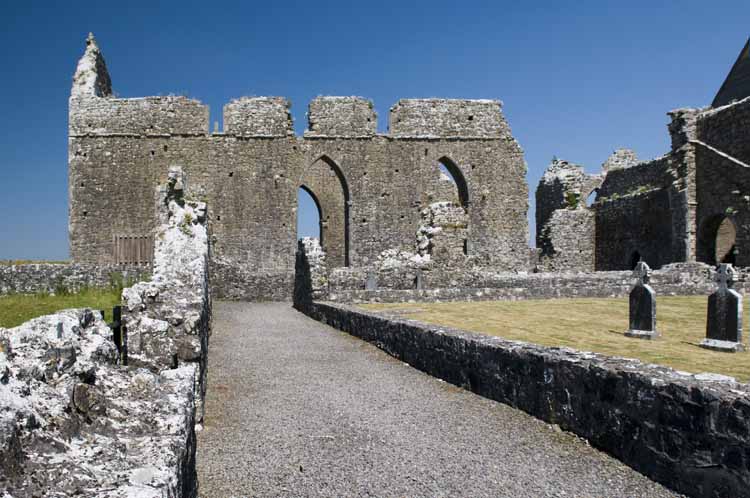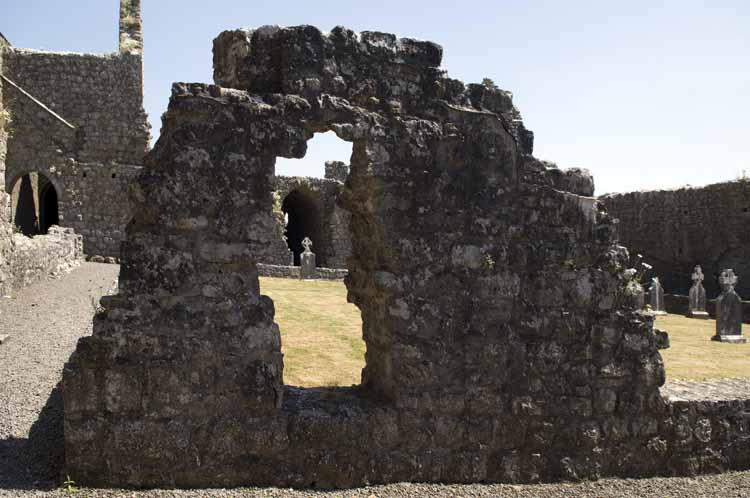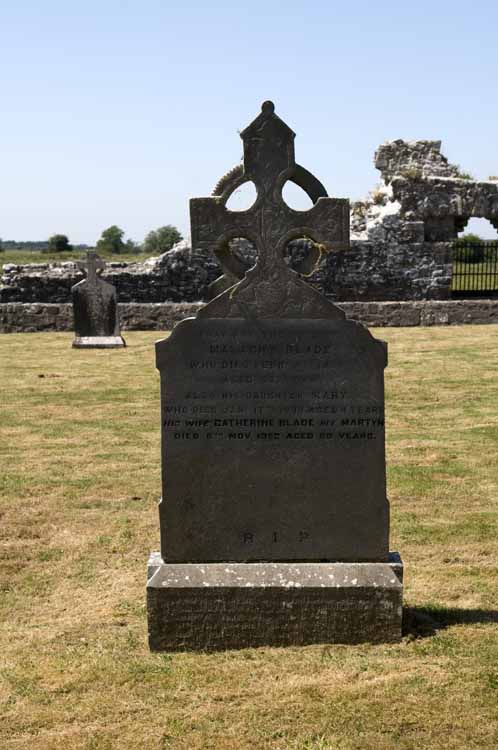Cloister in the Cistercian Abbey of Abbeyknockmoy, County Galway, Ireland.
It stood at the centre of the precinct, where it was sheltered from noise
and disruption. Access to outsiders was restricted and silence was observed,
making this an appropriate atmosphere for monks to devote themselves to
reading, meditation and prayer. It was made up of an open grassy space which
was surrounded by four roofed walkways and some of the walls which supported
the cloister arcade. The cloister was at the heart of liturgical ceremony and ritual.
Processions, such as those on Palm Sunday, Ascension Day and Assumption
Day started off in the church and then entered the cloister through a
doorway in the southern aisle of the nave, and down a series of convex
semi-circular steps. The party stopped first at the eastern range, then
at the refectory and finally at the western range. The entire community
participated in these processions, which were led by the abbot or prior
who was followed by the rest of the community walking in pairs. At the
Blessing of the Water on Sundays, one of the monastic officers sprinkled
water and salt around the cloister in an act of exorcism, while the
community offered blessings in the church. The cloister was also the
setting for the weekly Maundy, the ritual washing of the monks’ feet
which took place in the south of the cloister each Saturday afternoon
between the Collation reading and Compline, namely, c. 3.30 pm or 4 pm
in winter, and c. 7pm in summer. The south, east and west walkways of the cloister essentially
functioned as passageways, the north alley was used extensively by the
monks who sat here on stone benches to read, meditate and perhaps also
to copy manuscripts. The novice-master might instruct novices here and
the whole community gathered in the north alley each day for the
Collation reading. The cloister would have been warm and bright in the
summer, but the monks would have found it rather bleak during the chilly
winter months, and if it was extremely cold they were permitted to read
in the chapter-house, instead. The cloister was also used for more
practical activities: it was here that the monks shaved, washed
themselves and their clothes, and hung the laundry to dry. The laundry
at Roche was probably situated on the north side of the cloister, where
a circular hole and the remains of a drain can be seen between two large
buttresses.
Grave stone in the Cloister garth at Abbeyknockmoy. The inscription
is "Pray for the Sole of MALACHY BLADE who died February 8th 1928
aged 57 years. Also his daughter MARY who died January 17th 1909
aged 4 years. His wife CATHERINE BLADE nee MARTYN died 8th November
1952 aged 80 years."